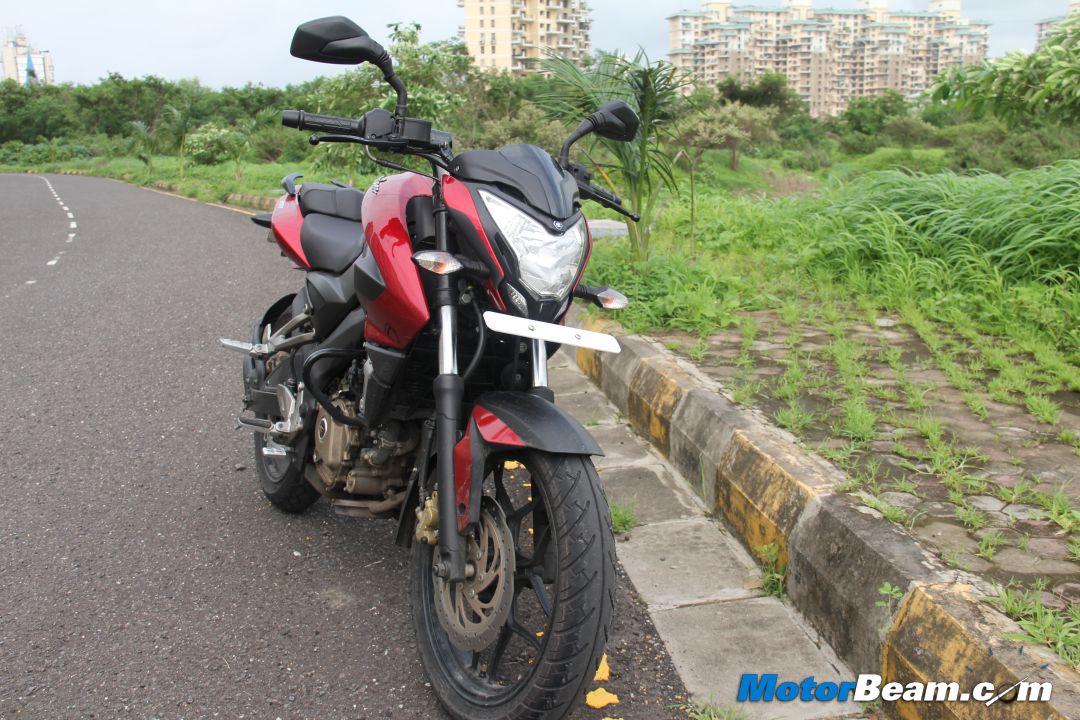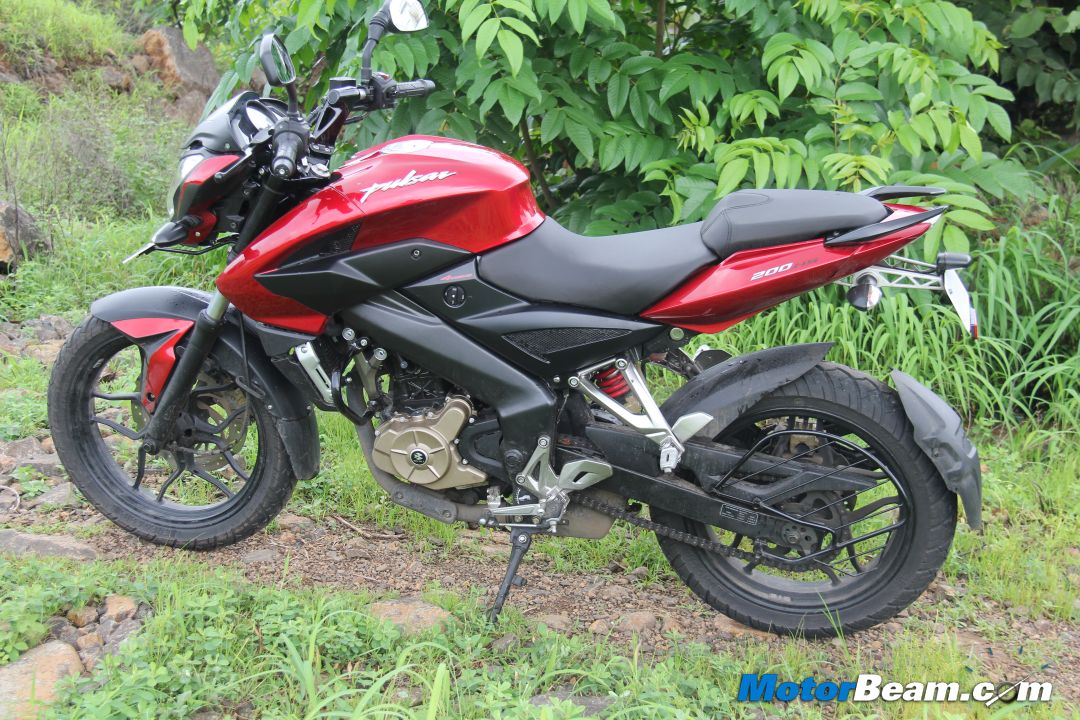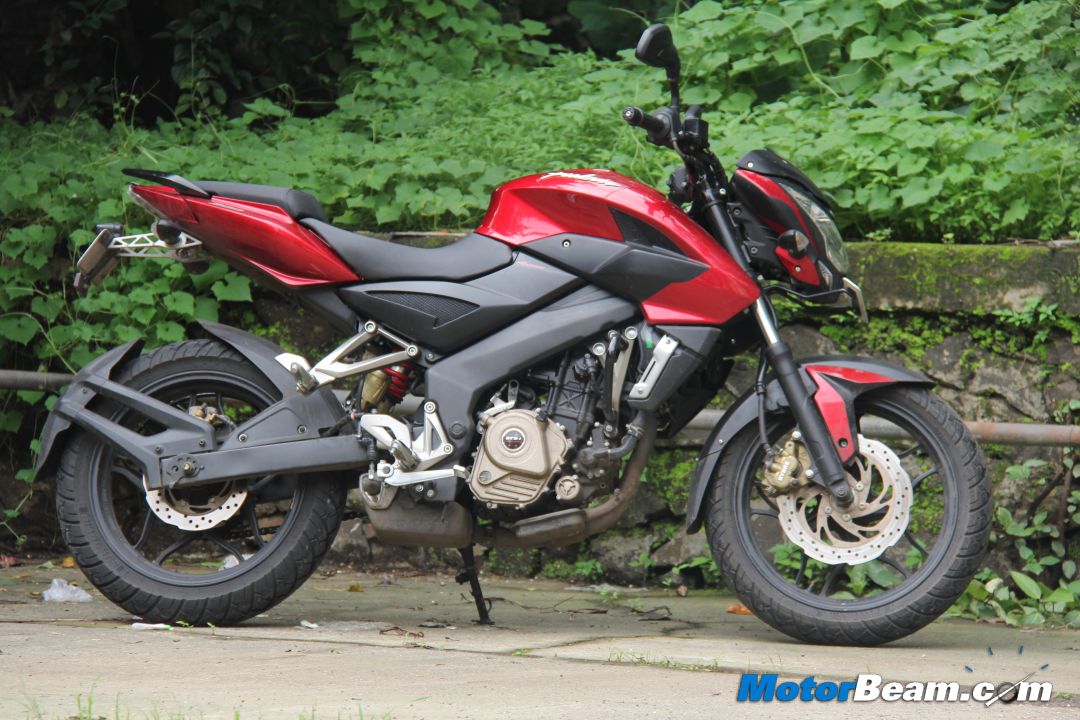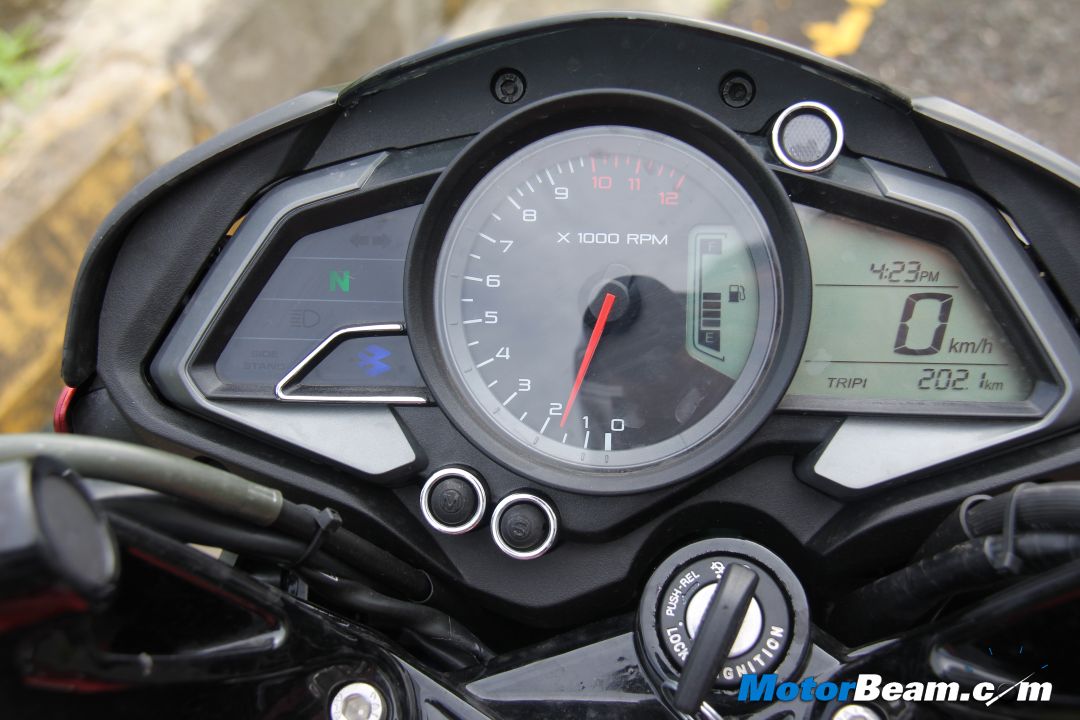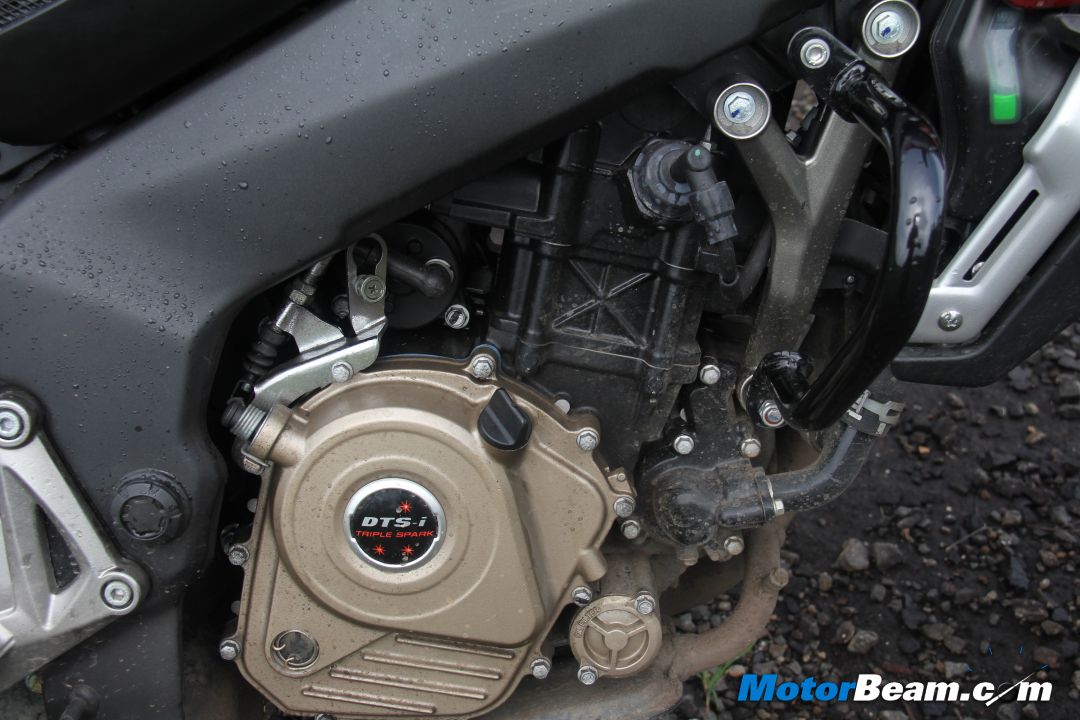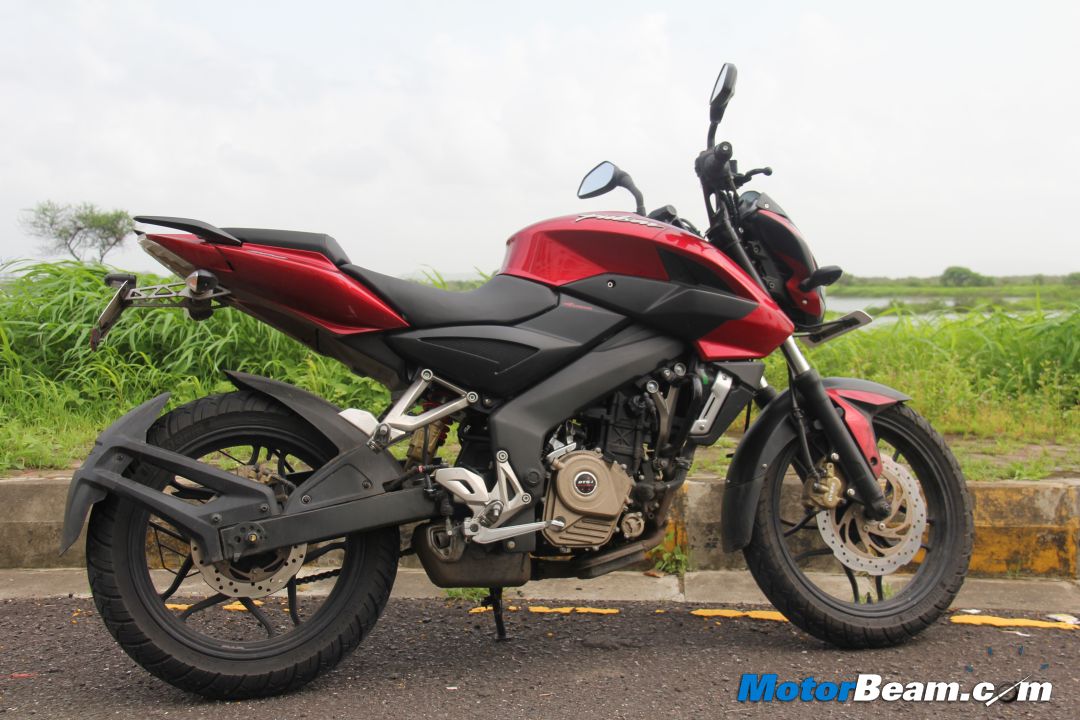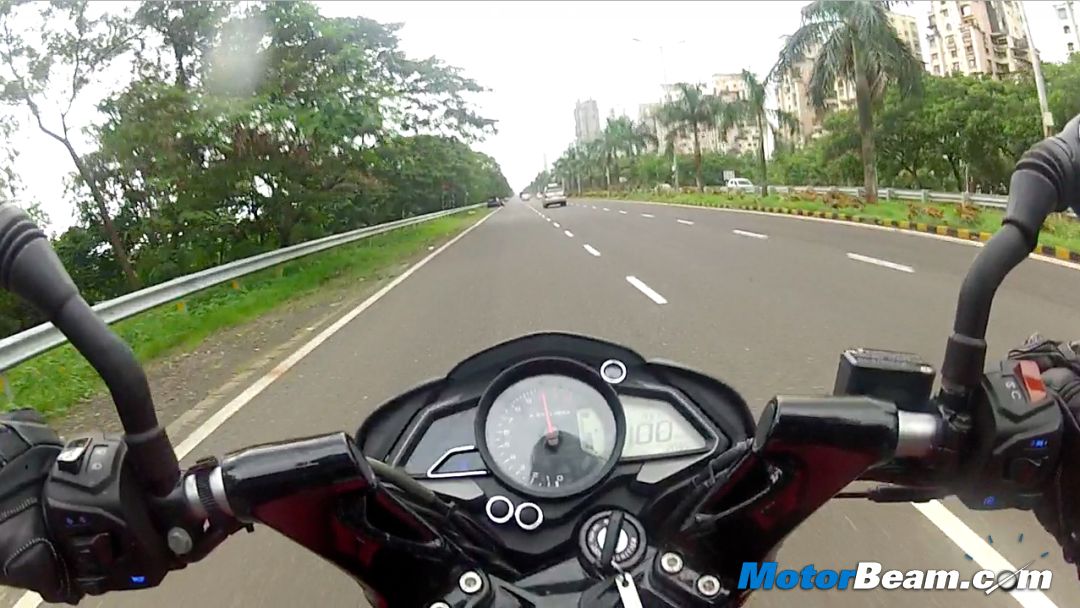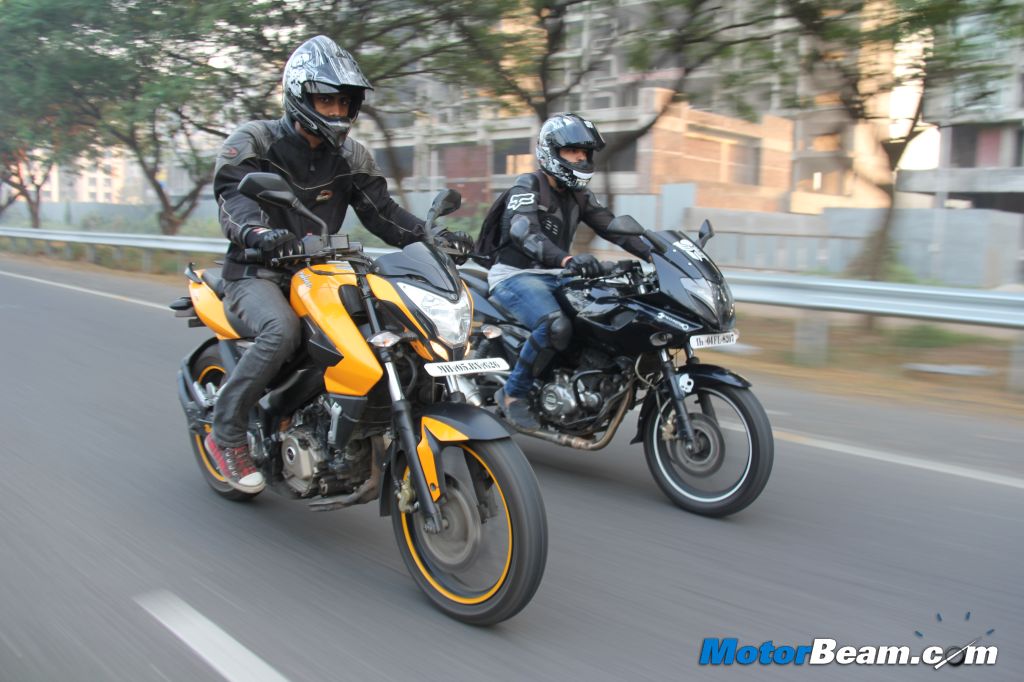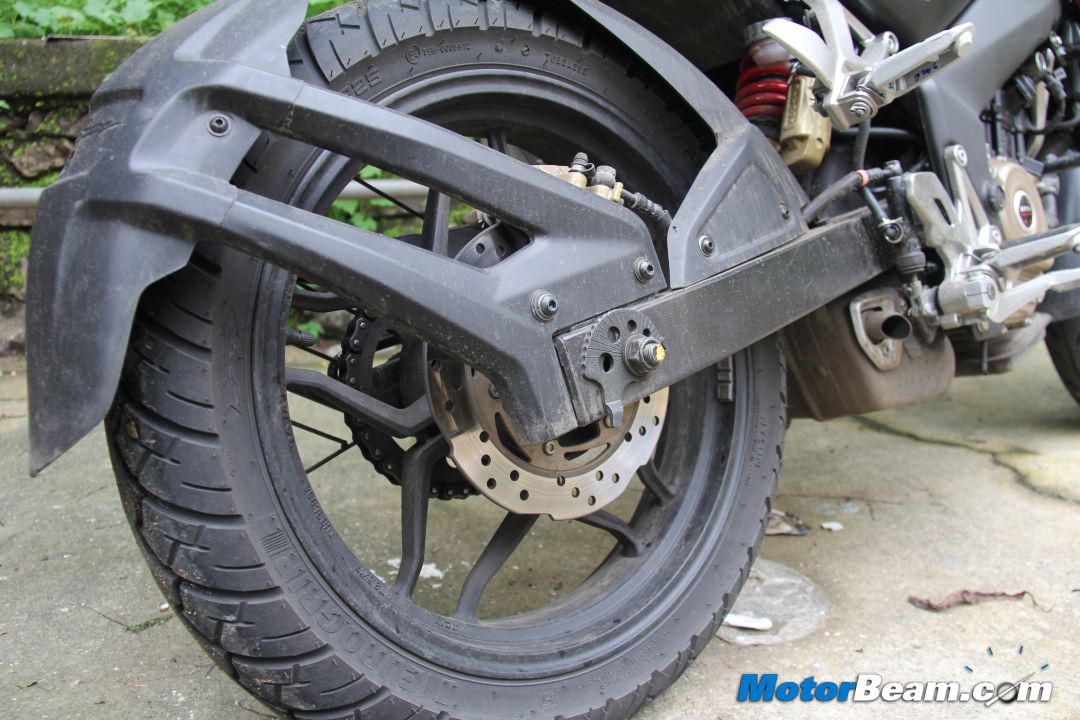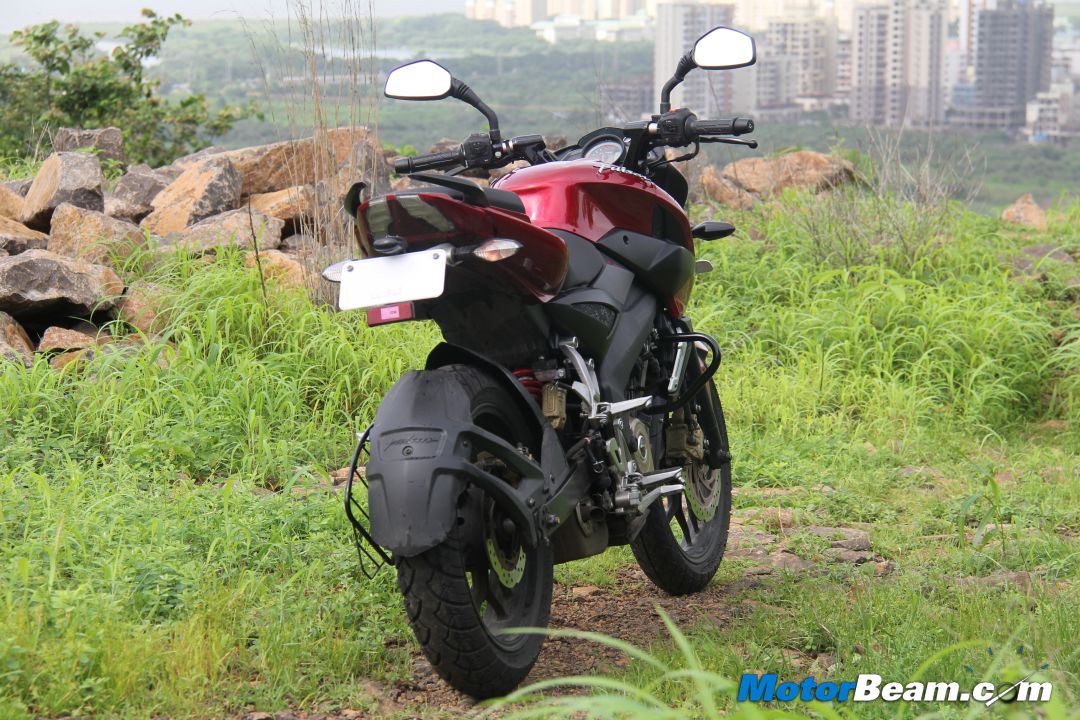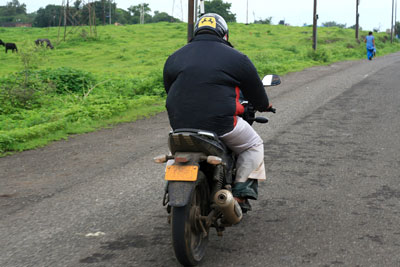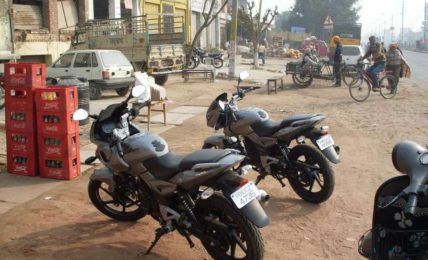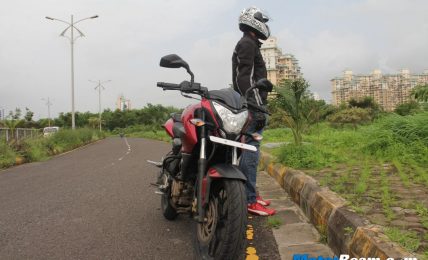Hi friends, trust you all are doing great. I am Reetabrata Bhattacharya from Mumbai and I have owned/ridden different motorcycles over the last 6 years of my life. I hold a Mechanical Engineering degree from BITS, Pilani and an MBA from SP Jain Institute of Management, Mumbai. Some of them, amongst the list of bikes/scooter I have owned and rode extensively include –
• Kinetic Italiano Blaze
• Hero Honda Karizma ZMR
• Bajaj Pulsar 220F DTSi
• Royal Enfield Electra 5s (Cast Iron Engine)
• Royal Enfield Thunderbird Twinspark
• Royal Enfield Machismo AVL 500
• Hero Honda Karizma R
• Bajaj Pulsar 200 NS
• Bajaj Pulsar 220F DTSi (My current steed)
This review/ownership experience is all about my Blue colour Bajaj Pulsar 200 NS (pictures on this post are from MotorBeam’s collection as I have very few and low resolution pictures of my bike), which Bajaj Auto has been bragging about as the ‘Best Pulsar Yet’ with enormous support from Auto Journalists/Experts who are leaving no stone unturned in singing praises for this bike in the choicest flowery language possible. True that some call it a street fighter and for some it’s a newly styled naked muscular beast that reminds them of the BMW range of street fighters (courtesy designer Edgar Heinrich). Here’s the review of one of the greatest mistakes of my life.
How it found its place in my garage
Post my Karizma, I was on the lookout in the market for a more focused handling machine. The Yamaha R15 would have been an obvious choice given its racing pedigree but having ridden my friend’s R15 V2 on a number of occasions, I wasn’t particularly impressed with the Yamaha’s everyday use capability. I found the R15’s posture a bit too aggressive and with pillion on board (considering I am 85 kgs and my friend weighs 90 kgs), its power does taper off substantially at the lower and mid range.
The KTM Duke 200 was my next obvious choice but post three test rides, found the bike to be a bit uncomfortable for my long legs (I am 6 feet 1 inch), which didn’t manage to fit in the tank recess and stuck out like bamboo shoots out of nowhere. The KTM Duke 200 is still an amazing machine, never ceases to surprise the rider with every wring of the throttle and focused handling as well as braking contributes further to making it a mouth watering proposition. The Honda CBR250R was also in my radar but honestly, found the ride quality and the feel similar to that of the Karizma, though a lot more powerful. I was also considering a used Kawasaki Ninja 250R, but the idea of buying a used bike again was met with stiff opposition by my mother. All this while the only bike I was consistently avoiding was the Pulsar 200 NS, this thought definitely arose in my mind.
I thereafter frantically looked up all published reviews and opinions on the Pulsar 200 NS, most of them by our so-called automobile experts with years of motorcycle evaluation experience under their belt. Not a single negative review of the 200 NS, wow now that was something! Many reviewers went as far as to say that the smoothness of the 200 NS can definitely be compared to a Honda or a Yamaha product. I was still a bit apprehensive considering the triple-spark technology of Bajaj which was being put to test with this bike. Bajaj claims this to be the “Best Pulsar Till Date”, sadly I don’t agree with this at all. Still I went ahead and took the plunge into buying the Pulsar 200 NS, blue-coloured. My unfortunate journey with the bike begins now, please read on.
Looks and Styling
Nothing much to mention in this section as we all know, looks are subjective. The fact that I like the way Bajaj has gone about with the styling of the 200 NS is correct to a certain degree. The Pulsar 200 NS looks like no Pulsar has ever looked before, attention to detail and intense concentration of the designers has made the bike what it is today. The offered colour options are also pretty thoughtful and gels well with the overall persona of the bike. There are however a few glitches like the front windscreen, which could have been a bit larger and definitely functional.
Bajaj also has the choice of offering a bigger windscreen for those who wish to tread the long way home or for those who wouldn’t mind the occasional weekend fun trip spanning a length of 250-500 kms. The seats personally are not to my liking as they are too hard to not feel undulations on Mumbai roads. However, the seating position isn’t cramped and even a tall rider finds it comfortable to putter around town in this bike. Cockpit instrumentation is very practical as well though I sorely missed the absence of a gear indicator.
Performance and Braking
Honestly, I find it difficult to come to terms with the entire hype surrounding the performance and technology of the Pulsar 200 NS. Liquid-cooling is a great feature included by Bajaj but the triple-spark technology didn’t feel convincing at all. Agreed that addition of more spark plugs was to enable efficient combustion of the Air-Fuel mixture in order to boost fuel efficiency and performance, but as good as it sounds in technical terms, real world picture atleast in my case was different.
I completed the bike’s running-in procedure as per the owner’s manual but despite that, performance was dismal for a 23.5 BHP engine. I have tried drag racing with a KTM Duke 200, a Honda CBR250R and a P220 DTSi and believe me, my 200 NS struggled to match the pace of either of these bikes. Shockingly, the P220 DTSi was a bit quicker and a lot smoother all the way to the 130 km/hr mark. The Duke 200 and CBR250R obviously were way ahead in terms of outright performance. The issues I faced on my Pulsar 200 NS are as follows –
• Excessive vibrations on the petrol tank, both rider and pillion seat and handlebars starting from 5500 RPM and extending all the way upto 10,500 RPM.
• On a trip to Baroda for a friend’s marriage, I had a very hard time riding with all the vibrations filtering through me at constant 90-100 km/hr speeds. The vibrations make it very difficult to ride the motorcycle over a long distance; I had to take a break every half an hour. Just to remind the readers that I have lived with Bullets for three good years and hence high speed vibrations weren’t new to me, just that the ones on the 200 NS proved unbearable.
• Coolant overflow was a common issue which the SVC failed to rectify.
• At expressway speeds above 100 km/hr, instability was felt especially at the front wheel, my suspicion the tyres weren’t upto the mark.
• The Pulsar 200 NS’ straight line stability goes for a toss on open highways in the presence of even mild to average magnitude of cross-winds.
• The bike’s performance takes a hit again on open highways due to headwinds. I suppose a technologically advanced bike like the Pulsar 200 NS should be able to endure atleast headwinds if not crosswinds. On one particular occasion on my way to Pune, I encountered decently strong headwinds in the Khopoli Ghat section and believe me, it was difficult to steer the bike in the intended direction.
One positive aspect of the bike that I wish to highlight is the presence of very efficient brakes. Those Bybre disc brakes do their job extremely well at all times, though there is a tendency of the rear brake to lock up under hard braking. In emergency situations, depressing the front brake by a substantial amount doesn’t lead to locking up or skidding.
Handling and Comfort
Handling is an area where the 200 NS has improved by leaps and bounds as compared to the older Pulsar models. The bike is very easy to chuck into corners as well as to weave in and out through traffic. Even high speed cornering on highways feels easy, mid corner bumps or undulations are flattened out by the suspension. The stock Eurogrip tyres were decent in terms of grip around corners in wet conditions, but a change of tyres to soft compound rubber would do a world of good in enhancing the Pulsar’s mid corner grip.
The front suspension of the Pulsar 200 NS is a conventional hydraulic fork type. The rear is a Nitrox charged Monoshock. The suspension setup is too stiff and ends up bruising the rider and pillion’s buttocks. The stiffness of the front forks is good in practice as that adds to stability under hard braking by reducing fork dive. But the rear monoshock disappoints by not providing the slightest of comfort on the minutest road undulations. Irrespective of whether it is a male or a female friend on the pillion seat, they time-and-again complained of lower back pain.
I was myself uncomfortable most of the times going on bad patches on the road or small potholes, which unfortunately is aplenty in Mumbai. Even not-so-major road undulations and humps literally whack the rider’s butt; the experience is similar to being hit by a ‘slingshot’ on the backside. My tailbone suffered in the process of riding the bike everyday from home to office and back (a good 60 kms to and fro combined). I tried setting the suspension to a softer setting (at position 1 and 2) but honestly it improved the comfort quotient by only a notch (say 10-15%); this ideally makes no great deal of a difference to the rider.
Designing the seats is where Bajaj Auto seems to have gone all wrong. I felt both rider and pillion seat insufficiently padded, again as against the opinion of auto experts. The rider seat lacks sufficient width for a 36-inch waist size like mine, the edges of the seat exerts pressure on the pelvic girdle causing long rides to turn painful. Bajaj doesn’t offer seat covers for the P200NS unfortunately. A customized seat cover with a thin layer of soft foam in it should be the solution for anyone looking to tour on this bike. But as I mentioned earlier, touring would still be a painful experience considering the frequency and magnitude of consistent vibrations that filters through the body of the rider and the pillion.
For those who feel the comfort on a KTM Duke 200 is inferior to that on the Pulsar 200 NS, let me clear the air by firmly stating that the Duke 200 and the 200 NS are at par when it comes to comfort. Infact the Duke’s rear monoshock has 10 settings which presents the rider with a wider array of options so as to fine tune the ride quality to a stiffer or a softer setting. Both the Duke and the NS have a stiff front end which is good from the safety aspect. The Duke’s pillion seat might be for supermodels or kids, but there is good reason for the rider to rejoice as the rider’s seat though not sufficiently padded, is wide and firm enough to enable even a bulky guy’s butt to endure a 2-hour continuous ride.
Fuel Economy
This is the department where the Pulsar 200 NS doesn’t disappoint, it returned me a steady 40 km/l in Mumbai city and 42 km/l on highways. I stuck to premium petrol (Speed) right from day one. The Pulsar 200 NS’ puny 12-litre tank is definitely sufficient for a 400-450 odd kms ride. But all this doesn’t give reason enough for Bajaj to incorporate the ‘Triple Spark’ technology which is apparently supposed to boost fuel economy and combustion. Duke 200 returns around 36-38 km/l in the city as well, despite being far more aggressive than the 200 NS. So it’s clear that the 200 NS doesn’t beat the Duke 200 by any appreciable margin when it comes to fuel efficiency.
Pulsar 220F vs Pulsar 200 NS
This is exactly the query which floats on the minds of some prospective 200 NS buyers. In my opinion, the Pulsar 220F DTSi is a far better bet than the 200NS due to the below mentioned reasons:-
• Headlights – The projector headlight setup on the P220 is by far one of the best on an Indian bike. Agreed the 200 NS also has a good headlight setup, but night riding on highways (something that I cherish doing often) will see the P220 headlight setup light years ahead of the 200 NS.
• Stability – The Pulsar 220 DTSi is by far one of the most stable bikes in its category, even in the face of strong cross/head winds. The 200 NS as I already mentioned is definitely not as stable as the P220 on open highways. The P220 due to the addition of a bikini faring is far steadier and completely at home doing 100 km/hr plus speeds on a National Highway or an expressway.
• Tyres – The P220 is blessed with soft compound MRF Zappers which grip very well on wet roads. The 200 NS wears Eurogrip tyres which have decent grip but not at par with the soft compound Zappers.
• Refinement/Smoothness – The P220’s DTSi engine is a tried and tested one, it is surely a lot more refined as compared to the 200 NS, which is extremely vibey as already mentioned.
• Fuel Economy – The P220 delivers better fuel economy as compared to the 200 NS, both in the city and on highways. The P220 even if ridden at high speeds on highways can still deliver a decent 45 km/l.
• Comfort – The P220 is definitely comfortable on city roads as well as highways, seat of the P220 has better foaming and is wider than the 200 NS. The bikini faring comprising of a windshield in the P220, gives the rider the added advantage of wind protection, which is not even available as an option on the P200 NS.
• Self-cancelling indicators – This is a feature which even though very useful, is absent on the 200 NS. Surprising bit is that the back-lit switches of the P220 found its way on the 200 NS but not the self-cancelling indicator feature.
• Handling – The P200 NS is an excellent handling bike no doubt, the monoshock and the stiff chassis only makes the handling deal sweeter. Climbing winding ghats on the 200 NS is an absolute delight. The P220 on the other hand was never portrayed as a handling bike, its handling prowess may not be in the league of the 200 NS but, it does handle pretty well on curves as well as in ghats. The soft compound tyres on the P220 aid in the bike’s mid-corner stability and therefore, doesn’t stress or hamper the rider’s confidence when riding through curves.
• Brakes – Braking is a department in which the 200 NS is light years ahead of the P220. The Bybre disk brake setup on the NS has tremendous bite, thereby increasing the rider’s confidence as compared to the Bybre setup on the P220 which lacks bite. The rear disc brake on the P220 is literally of no use, especially with a pillion on-board.
The Verdict
The Pulsar 200 NS is not worth a buy unless Bajaj Auto sorts out its un-refinement and vibration issues. It looks to me as if Bajaj were in a tearing hurry to launch the 200 NS in an attempt to counter the CBR150R and R15 V2 onslaught. I sincerely advise prospective buyers of the Pulsar 200 NS to go for the KTM Duke 200 if they can afford to spare Rs. 1.5-odd lakhs or blindly go for the Pulsar 220 DTSi as it’s a bike that has stood the test of time, since competition has upped its stake in the 200cc plus segment.
I was fed up of approaching Bajaj SVC time and again to sort out the issues on my 200 NS but alas, even Bajaj’s western region service head Mr. Santosh from Pune failed to resolve the problems despite repeated attempts. He finally gave up saying those famous words – “Arre boss, yeh 200 NS model aisa hi hain. Aap vibrations par dhyaan mat dijiye, bas chalaiye”. Post hearing these words from the devil himself (customer service head), I started hunting for a buyer and eventually sold the bike for Rs. 72,000/-, after having ridden 10,000 kms on it.
P.S. – Readers kindly note that I am no Bajaj product basher, in fact I hold a great deal of appreciation for Bajaj’s aggressive strategy in the domestic market. In a country where “kitna deti hain” still matters to 80% of the population, Bajaj is doing a good job in offering a blend of performance and fuel economy to the youth. I have owned and appreciated the Pulsar brand right since its inception. I still own a Pulsar 220F DTSi which is serving my purpose adequately both in city and on highways. The Pulsar 200 NS needs a good deal of re-working from Bajaj in order to make it a better rider’s bike. The Avenger is also a product that Bajaj can do something serious with, like equipping it with a larger engine and improving its ergonomics.
This post was written by Reetabrata Bhattacharya. MotorBeam doesn’t necessarily subscribe to his opinions on the Pulsar 200 NS. This is an ownership report and different owners might have different experiences with the product, owing to their usage.


